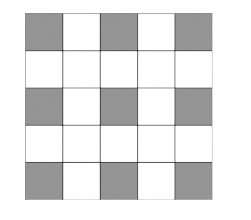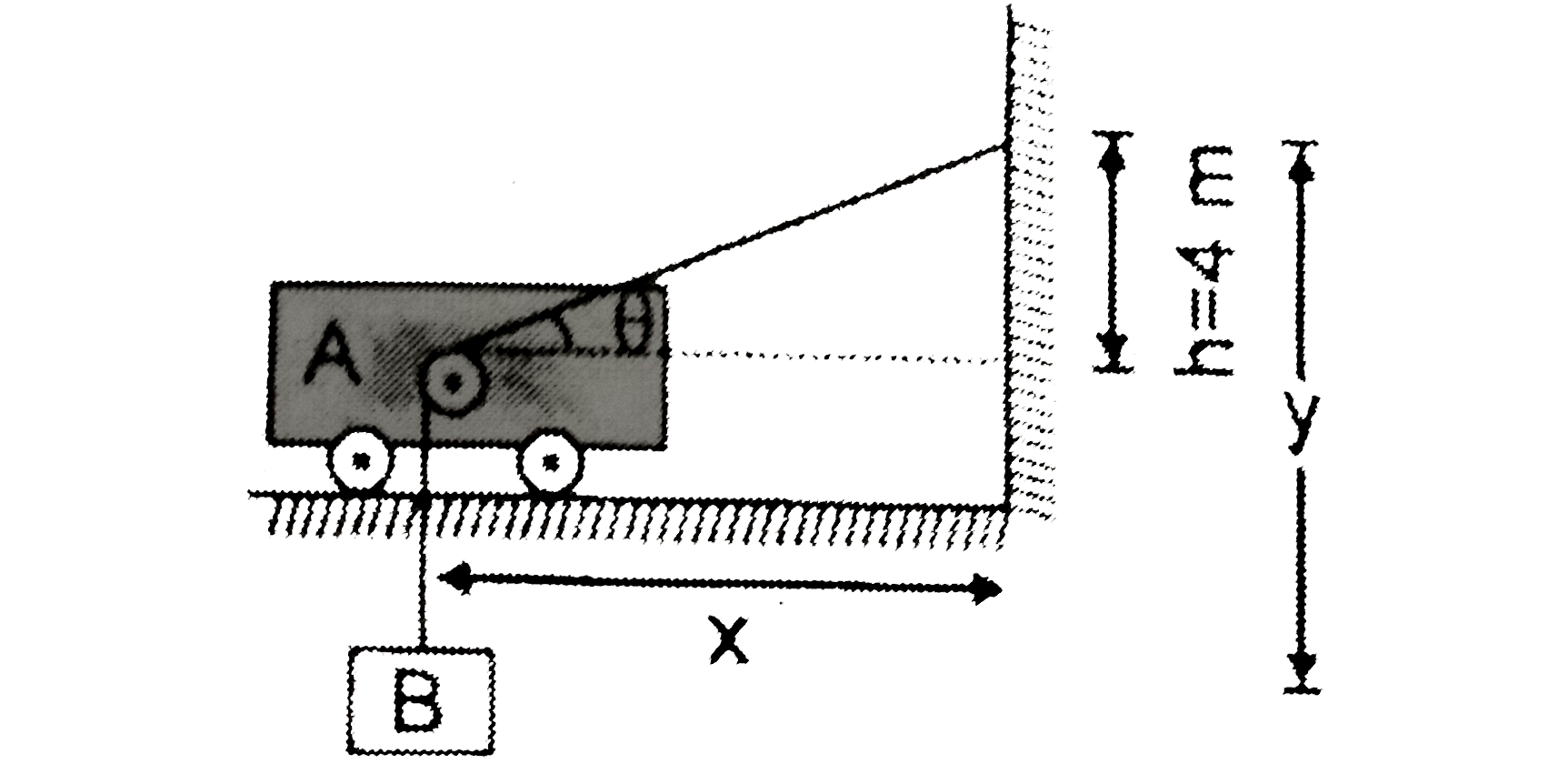InterviewSolution
This section includes InterviewSolutions, each offering curated multiple-choice questions to sharpen your knowledge and support exam preparation. Choose a topic below to get started.
| 801. |
int_0^1(dx)/(e^x+e^(-x))is equal to |
|
Answer» `tan^(-1) (e^(x)) + C` |
|
| 802. |
If p_1, p_2, p_3 denote the perpendicular distance of the plane 2x-3y+4z+2=0 from the parallel planes. |
|
Answer» `p_1+8p_2-p_3=0` |
|
| 803. |
If p(x)= ax^(2)+bx+c and Q(x) =-ax^(2)+dx+c where ac ne 0 then the equation P(x).Q(x)=0 has atleast |
|
Answer» TWO realroots |
|
| 804. |
Two cards are drawn from a pack. The probability that one of them is a club and the other is not a club is |
| Answer» Answer :D | |
| 805. |
If a_(1), a_(2), a_(3), a_(4), a_(5) are consecutive terms of an arithmetic progression with common difference 3, then the value of |(a_(3)^(2),a_(2),a_(1)),(a_(4)^(2),a_(3),a_(2)),(a_(5)^(2),a_(4),a_(3))| is |
|
Answer» 0 |
|
| 806. |
With usual notation in Delta ABC, the numerical value of ((a+b+c)/(r_(1)+r_(2)+r_(3))) ((a)/(r_(1))+(b)/(r _(2))+ (c)/(r_(3))) is |
|
Answer» |
|
| 807. |
Let alpha,beta be the roots of the equation ax^2+bx+c=0 "Let" S_n=alpha^n+beta^n "for" n ge 1 evaluate the determinant |{:(3,1+s_1,1+s_2),(1+s_1,1+s_2,1+s_3),(1+s_2,1+s_3,1+s_3):}| |
|
Answer» |
|
| 808. |
If a_(1), a_(2), a_(3), ……. , a_(n) are in A.P. and a_(1) = 0, then the value of (a_(3)/a_(2) + a_(4)/a_(3) + .... + a_(n)/a_(n - 1)) - a_(2)(1/a_(2) + 1/a_(3) + .... + 1/a_(n - 2)) is equal to |
|
Answer» `(N - 2) + 1/(n- 2)` |
|
| 809. |
If x^(2) +4 ax +2 gt 0 for all values of x, then a lies in the interval |
|
Answer» `(-2,4)` |
|
| 810. |
If x in((-pi)/2, pi/2), then log sec x = |
|
Answer» `2 " cosech"^(-1) (cot^(2)frac(X)(2) - 1)` |
|
| 812. |
If matrix A=[a_(ij)]_(2xx2,where a_(ij)=1i nejthen A^(2) is equal to ……… |
|
Answer» I |
|
| 813. |
y=2x^(2)-1, then (1)/(x^(2))+(1)/(2x^(4))+(1)/(3x^(6))+…….oo |
|
Answer» `-LOG((y-1)/(y+1))` |
|
| 814. |
Consider an operation ** defined on the set A={1,2,4,8} by a**b=LCM of a and b. Show that ** is a binary operation. |
|
Answer» SOLUTION :We have `4**5`=L.c.m. of 4 and 5 `=20 in {1,2,3,4,5} `therefore **` is not a BINARY OPERATION |
|
| 815. |
The position vectors of two points P and Q are hat(i)+2hat(j)-hat(k)" and "-hat(i)+hat(j)+hat(k) respectively. Find the position vector of a point R which divides the line bar(PQ) in the ratio 2 : 1 internally. |
|
Answer» |
|
| 816. |
If P(alpha,beta,lambda) is a vertex of an equilateral triangle PQR where vertex Q and R are (-1,0,1) and (1,0,-1) respectively, then P can lie on the plane |
|
Answer» `x+y+z+6=0` `therefore QR=2sqrt(2)` Now, the mid point of QR is M(0,0,0). Triangle PQR is equilateral. `therefore PM=MQ XX tan60^(@) = sqrt(2)sqrt(3)=sqrt(6)`. Thus, P can lie on the plane whose DISTANCE from point M is less than or equal to `sqrt(6)`. Hence, P can lie on the plane `x+y+z+3sqrt(2)=0` |
|
| 817. |
He changes the floor into a plate as shown below And says his L-Tromino has 3 ground squares and 1 hole. He says that he has used 8 L-Trominos on the floor and just 1 1x1 single warp tile, which can take him to the next level. However, the problem is that the warp tile looks like the ground tiles, exactly alike. How many positions could the warp tile possibly be? |
|
Answer» 1  Each Ltromino can COVER at most one of the coloured squares. Since thereare only EIGHT Ltrominoes, the `1 × 1` square tile must also cover a colouredsquare. It turns out that all nine positions are possible. The constructionsare QUITE STRAIGHTFORWARD and will be LEFT to the reader. |
|
| 818. |
Integrating factor of the differential equation (1-x^(2)) (dy)/(dx) + xy = (x^(4))/((1 + x^(5)) ( sqrt(1 -x^(2)))^(3) is |
|
Answer» `SQRT(1-X^(2))` |
|
| 819. |
Three planes do not have any common point of intersection if __ |
|
Answer» <P>`p=2,Q ne 3` |
|
| 820. |
Let L_(1), L_(2) and L_(3) be the lengths of tangents drawn from a point P to circles x^(2)+y^(2)=4, x^(2)+y^(2)-4x=0 and x^(2)+y^(2)-4y=0 respectively. If L_(1)^(4)=L_(2)^(2)L_(3)^(2)+16 then the locus of P are the curves, C_(1) (a straight line) and C_(2) (a circle). Q.Circum centreof the triangle formed by C_(1) and two other lines which are at angle of 45^(@)with C_(1) and tangent of C_(2) is : |
| Answer» ANSWER :B | |
| 821. |
Let L_(1), L_(2) and L_(3) be the lengths of tangents drawn from a point P to circles x^(2)+y^(2)=4, x^(2)+y^(2)-4x=0 and x^(2)+y^(2)-4y=0 respectively. If L_(1)^(4)=L_(2)^(2)L_(3)^(2)+16 then the locus of P are the curves, C_(1) (a straight line) and C_(2) (a circle). Q.If S_(1), S_(2) and S_(3) are three circles congruent to C_(2) and touch both C_(1) and C_(2), then the area oftriangle formed by joining centresof the circlesS_(1), S_(2) and S_(3) is (in square units) |
|
Answer» 2 |
|
| 822. |
If veca=-hati+hatj+2hatk, vecb=2hati-hatj-hatk and vecc=-2hati+hatj+3hatk, then the angle between 2overset(-)a-overset(-)c and overset(-)a+overset(-)b is |
| Answer» ANSWER :B | |
| 823. |
Find the number of arrangements that can be made by using all the letters of the word "EQUATION" so that the consonants may be in even places, |
|
Answer» |
|
| 824. |
A unit vector coplanar with I + j + 3k and I + 3j + k and perpendicular to I + j + k is |
|
Answer» `(1)/(SQRT(2)) (J + k)` |
|
| 825. |
The string shown ................. |
Answer»  `(y-h)+sqrt(x^(2)+h^(2))=l` `(dy)(dt)+x/sqrt(x^(2)+h^(2)) (dx)/(dt)=0` `(dy)/(dt)=- x/sqrt(x^(2)+h^(2)) (dx)/(dt)` ...(1) `(dy)/(dt)=-3/5 v_(A)` `|v_(B)|=3/5 v_(A)` Differentiation EQUATION (1) `|(d^(2)y)/(dt^(2))|=v_(A) [(x(x(dx)/(dt)))/sqrt((x^(2)+h^(2))^(3))+(((dx)/(dt)))/sqrt(x^(2)+h^(2))]` `|(d^(2) y)/(dt^(2))|=v_(A)^(2) h^(2)/((x^(2)+h^(2))^(3//2))` `a_(B)=v_(A)^(2) 16/((5)^(3))` `a_(B)=16/125 v_(A)^(2)` |
|
| 826. |
int (2x + 3)/(sqrt(4x + 3)) dx = |
|
Answer» `(1)/(12)( 4x - 3)^((3)/(2)) + (1)/(4) SQRT(4x + 3) + c ` |
|
| 827. |
Find the values of the following integrals (vi) int_(0)^(pi//2)tan^(2) x cos^(8) x dx |
|
Answer» |
|
| 828. |
The picture demonstrates a 3*3 box with 4 knights denoted by the letters. W stands for a white knight and B for a black one. As in a standard game of chess, the knight can move only two steps in the horizontal or vertical direction and then one step in the other direction for one move. The objective of the game is to interchange the position of both the black and white knights. What is the minimum number of moves required to complete the game? |
|
Answer» 8  The above FIGURE REPRESENTS the first ‘8’ MOVES which LEADS to 90o rotation of initial arrangement. Therefore, on performing a total of ‘16’ moves required arrangement is ACHIEVED. |
|
| 829. |
Degree of the given differential equation ((d^2y)/(dx^2))^3 = (1+(dy)/(dx))^(1/2) is |
|
Answer» 2 |
|
| 830. |
An eight digit number is a multiple of 73 and 137. If the second digit from left is 7, what is the 6th digit from the left of the number ? |
|
Answer» |
|
| 831. |
If the circlex^(2) +y^(2) + 2gx + 2fy + c = 0bisects the circumference of the circlex^(2) +y^(2) + 2g'x + 2f'y + c' = 0, them the length of the common chord of these two circles is |
|
Answer» `2sqrt(g^2+f^2-c)` |
|
| 832. |
If z_1=a+ib and z_2=c+id are twocomplex numbers where a,b,c,d in R and |z_1|=|z_2|=1and lm (z_1barz_2)=0. If w_1=a+ic and w_2=b+id, then : |
|
Answer» `LM(w_1 barw_2)=0` |
|
| 833. |
If there exists exactly one point of the line 3x+4y+25=0from which perpendicular tangesnt can be brawn to ellipse (x^(2))/(a^(2))+y^(2)=1(agt1), |
|
Answer» Solution :Locus of POINT of intersecrtion fo perpendicular tangents is director circle. If there axists exactly one such point on the LINE 3x+4y+25=0, then line must touch the dierector circle whose equation is `x^(2)+y^(2)=a^(2)=1` Distance of centre of the circle from the line is 5. So, we must have `25=a^(2)+1` `RARR a^(2)=24 :. a =SQRT(24)` `:.` Electricity `sqrt(1-(1)/(24))=sqrt((23)/(24))` |
|
| 834. |
If the distinct numbers a, b, c are in G.P. while a - b, c-a,b-c are in H.P., then (a+c)/(b) = |
| Answer» ANSWER :A::D | |
| 835. |
If f' ((x)/(y)), f(x)/(y))=(x^(2)+y^(2))/(xy) AA x,y in R^(+) and f(1)=1, then f^(2) (x)is |
|
Answer» `X+In x` Interchanging x,y we GET `f'((x)/(y)),f((y)/(x))=f'((y)/(x))f((x)/y)` `impliesInf((x)/(y))=INF((y)/(x))+C` Putting x=y,` we get `f'((x)/(y)).f((y)/(x))=f'((y)/(x))f((x)/(y))` `implies In f((x)/(y)) = In f((y)/(x))+C` Putting x=y, we get C=0 `impliesf((x)/(y))=f((y)/(x))...(ii)` Putting y=1, in equation (i) and (ii), we get `impliesf'(x)f((1)/(x)) =(x^(2)+1)/(x)` and `f(x)=f((1)/(x))` `impliesf'(x)f(x)=x+(1)/(x)` `implies (f(x))^(2)=x^(2)+2ln x` |
|
| 836. |
Is it possible to write the numbers 17, 18, 19,…32 in a 4 xx f grid of unit squares, with one number in each square, such that the product of the numbers in each 2 xx2 sub-grids AMRG, GRND, MBHR and RHCN is divisible by 16? |
|
Answer» |
|
| 837. |
A pole 10 m high stands on a tower 30 m. high. The angle of elevation of the top of the pole at a point A on the ground in 45^(@) and the pole subtends an angle alpha at the same point A then alpha is equal to (with each side equal to 100 m.) |
|
Answer» `COT^(-1) (1//7)` |
|
| 838. |
If therootsof 6x^3-11 x^2+6x =0are inH.Pthenone of therootsis |
|
Answer» `1/2` |
|
| 839. |
Ifax^2 + 2hxy - by^2 = 3 then(d^2y)/(dx^2) = |
|
Answer» `(( hx^2 + by + ax) )/((ax + hy)^2)` |
|
| 841. |
Let f (x) =(1)/(x ^(2)) int _(4)^(x) (4t ^(2) -2 f '(t) dt,find 9f'(4) |
|
Answer» 16 |
|
| 842. |
Equations of planes parallel to the plane x-2y+2z+4=0 which are at a distance of one unit from the point (1,2,3) are. . . |
|
Answer» x+2y+2z=-6,x+2y+2z=5 `x-2y+2z+4=0`. . (i) Equation of plane parallel to plane (i) is `x-2y+2z+K=0`. . .(ii) since, DISTANCE of plane (ii) from point (1,2,3) is 1 unit `therefore(|1(1)-2(2)+2(3)+k|)/(sqrt((1)^(2)+(-2)^(2)+(2)^(2)))=1` `IMPLIES(|1-4+6+k|)/(sqrt(1+4+4))=1 ` `implies(|3+k|)/(sqrt(9))=1 ` `implies|3+k|=3implies3+k=+-3impliesk=0,-6` `therefore`Required equation of plane are `x-2y+2z+0=0 and x-2y+2z-6=0` `impliesx-2y+2z=0 and x-2y+2z-6=0` |
|
| 843. |
The median from the following date : {:("Mid-value","Frequency","Mid-value","Frequency"),(115,6,165,60),(125,25,175,38),(135,48,185,22),(145,72,195,3),(155,116,,):} is |
|
Answer» ` 153. 79` |
|
| 844. |
(i) int 1/(1-x^3) dx (ii) int 1/(x^3-1) dx (iii) int (2x)/(x^3-1) dx |
|
Answer» (II) `1/3` (III) `2/3` |
|
| 845. |
Method of integration by parts : If I_(n)=int cot^(n)x dx then I_(0)+I_(1)+2(I_(2)+I_(3)+,......+I_(8))+I_(9(+I_(10)=.... |
|
Answer» `U+(u^(2))/(2)+....+(u^(9))/(9)` |
|
| 846. |
The mean deviation from the mean for the set of observation -1, 0, 4 is |
| Answer» Answer :C | |
| 848. |
Let the vectors vec(a) and vec(b) be such that |vec(a)|=3 and |vec(b)|=(sqrt(2))/(3), then vec(a)xx vec(b) is a unit vector, if the angle between vec(a) and vec(b) is……. |
| Answer» Answer :B | |
| 849. |
If the angle between the tangents drawn to the circle x^2+y^2-12x-16y=0 at the points where the line 5y=5x=k cut the circle is 60^(@) , then the value of k is |
|
Answer» `5+SQRT(2)` |
|
| 850. |
An ellipse whose distance between foci S and S is 4 units is incribed in the triangle ABC touching the sides AB, AN and BC at P, Q and R. If centre of ellipse is or origin and major axis along-axis, SP+SP=6, then answer the following questions. Equation of ellipse is |
|
Answer» `(x^(2))/(5)+(y^(2))/(9)=1` |
|